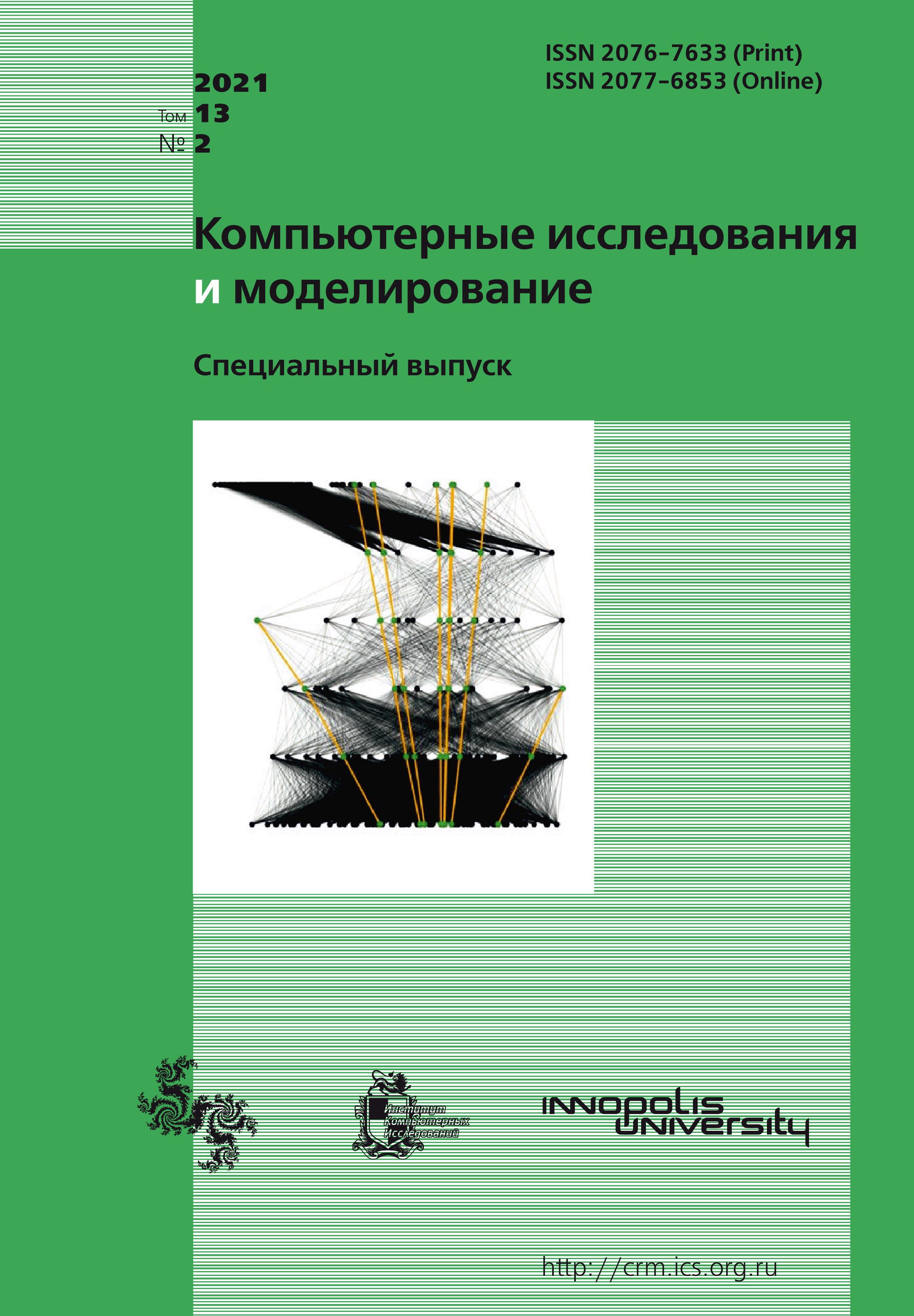All issues
- 2025 Vol. 17
- 2024 Vol. 16
- 2023 Vol. 15
- 2022 Vol. 14
- 2021 Vol. 13
- 2020 Vol. 12
- 2019 Vol. 11
- 2018 Vol. 10
- 2017 Vol. 9
- 2016 Vol. 8
- 2015 Vol. 7
- 2014 Vol. 6
- 2013 Vol. 5
- 2012 Vol. 4
- 2011 Vol. 3
- 2010 Vol. 2
- 2009 Vol. 1
Finding equilibrium in two-stage traffic assignment model
 pdf (21096K)
pdf (21096K)
Authors describe a two-stage traffic assignment model. It contains of two blocks. The first block consists of a model for calculating a correspondence (demand) matrix, whereas the second block is a traffic assignment model. The first model calculates a matrix of correspondences using a matrix of transport costs (it characterizes the required volumes of movement from one area to another, it is time in this case). To solve this problem, authors propose to use one of the most popular methods of calculating the correspondence matrix in urban studies — the entropy model. The second model describes exactly how the needs for displacement specified by the correspondence matrix are distributed along the possible paths. Knowing the ways of the flows distribution along the paths, it is possible to calculate the cost matrix. Equilibrium in a two-stage model is a fixed point in the sequence of these two models. In practice the problem of finding a fixed point can be solved by the fixed-point iteration method. Unfortunately, at the moment the issue of convergence and estimations of the convergence rate for this method has not been studied quite thoroughly. In addition, the numerical implementation of the algorithm results in many problems. In particular, if the starting point is incorrect, situations may arise where the algorithm requires extremely large numbers to be computed and exceeds the available memory even on the most modern computers. Therefore the article proposes a method for reducing the problem of finding the equilibrium to the problem of the convex non-smooth optimization. Also a numerical method for solving the obtained optimization problem is proposed. Numerical experiments were carried out for both methods of solving the problem. The authors used data for Vladivostok (for this city information from various sources was processed and collected in a new dataset) and two smaller cities in the USA. It was not possible to achieve convergence by the method of fixed-point iteration, whereas the second model for the same dataset demonstrated convergence rate $k^{-1.67}$.
Copyright © 2021 Kotliarova E.V., Gasnikov A.V., Gasnikova E.V., Yarmoshik D.V.
Indexed in Scopus
Full-text version of the journal is also available on the web site of the scientific electronic library eLIBRARY.RU
The journal is included in the Russian Science Citation Index
The journal is included in the RSCI
International Interdisciplinary Conference "Mathematics. Computing. Education"






